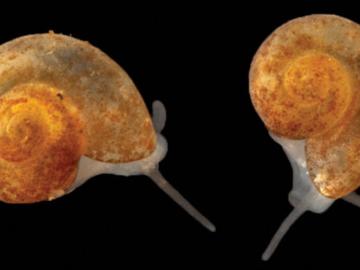
Filter News
Area of Research
- (-) Biology and Environment (51)
- (-) Energy Science (111)
- (-) Fusion and Fission (7)
- (-) Supercomputing (54)
- Advanced Manufacturing (8)
- Building Technologies (2)
- Computational Biology (1)
- Computational Engineering (2)
- Computer Science (9)
- Electricity and Smart Grid (1)
- Energy Sciences (1)
- Functional Materials for Energy (1)
- Fusion Energy (1)
- Materials (56)
- Materials for Computing (8)
- Mathematics (1)
- National Security (29)
- Neutron Science (13)
- Nuclear Science and Technology (2)
- Quantum information Science (3)
News Topics
- (-) Artificial Intelligence (45)
- (-) Clean Water (19)
- (-) Composites (19)
- (-) Critical Materials (13)
- (-) Cybersecurity (15)
- (-) Polymers (14)
- 3-D Printing/Advanced Manufacturing (82)
- Advanced Reactors (10)
- Big Data (34)
- Bioenergy (66)
- Biology (82)
- Biomedical (33)
- Biotechnology (18)
- Buildings (39)
- Chemical Sciences (24)
- Computer Science (117)
- Coronavirus (31)
- Education (1)
- Energy Storage (76)
- Environment (148)
- Exascale Computing (30)
- Fossil Energy (2)
- Frontier (33)
- Fusion (23)
- Grid (42)
- High-Performance Computing (58)
- Hydropower (10)
- Isotopes (4)
- ITER (6)
- Machine Learning (25)
- Materials (49)
- Materials Science (44)
- Mathematics (7)
- Mercury (10)
- Microelectronics (1)
- Microscopy (21)
- Molten Salt (1)
- Nanotechnology (19)
- National Security (12)
- Neutron Science (23)
- Nuclear Energy (34)
- Partnerships (14)
- Physics (10)
- Quantum Computing (20)
- Quantum Science (26)
- Security (10)
- Simulation (31)
- Software (1)
- Space Exploration (6)
- Statistics (1)
- Summit (48)
- Transportation (72)
Media Contacts

Oak Ridge National Laboratory researchers have developed a thin film, highly conductive solid-state electrolyte made of a polymer and ceramic-based composite for lithium metal batteries.

Researchers at Oak Ridge National Laboratory demonstrated a 20-kilowatt bi-directional wireless charging system on a UPS plug-in hybrid electric delivery truck, advancing the technology to a larger class of vehicles and enabling a new energy storage method for fleet owners and their facilities.

Suman Debnath, a researcher at ORNL, has been elevated to the grade of senior member of the Institute of Electrical and Electronics Engineers (IEEE).

In the race to identify solutions to the COVID-19 pandemic, researchers at the Department of Energy’s Oak Ridge National Laboratory are joining the fight by applying expertise in computational science, advanced manufacturing, data science and neutron science.

Sometimes conducting big science means discovering a species not much larger than a grain of sand.

Scientists at the Department of Energy’s Oak Ridge National Laboratory have developed a new method to peer deep into the nanostructure of biomaterials without damaging the sample. This novel technique can confirm structural features in starch, a carbohydrate important in biofuel production.

Each year, approximately 6 billion gallons of fuel are wasted as vehicles wait at stop lights or sit in dense traffic with engines idling, according to US Department of Energy estimates.

As the second-leading cause of death in the United States, cancer is a public health crisis that afflicts nearly one in two people during their lifetime.

Researchers at ORNL demonstrated that sodium-ion batteries can serve as a low-cost, high performance substitute for rechargeable lithium-ion batteries commonly used in robotics, power tools, and grid-scale energy storage.

The prospect of simulating a fusion plasma is a step closer to reality thanks to a new computational tool developed by scientists in fusion physics, computer science and mathematics at ORNL.


